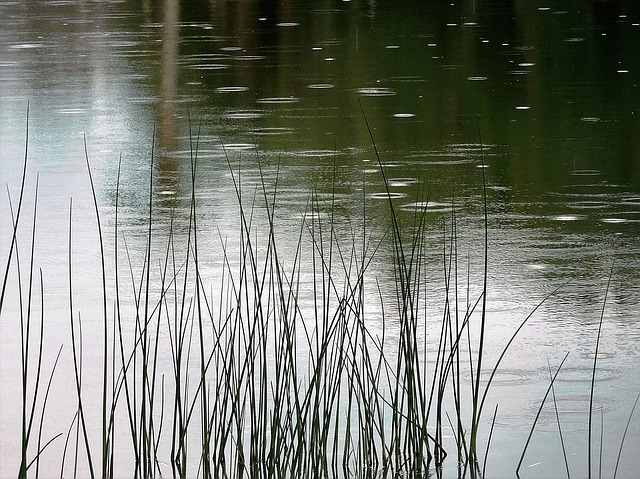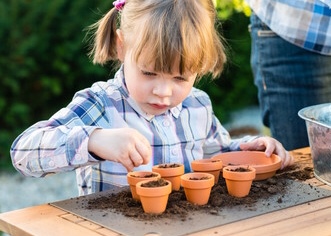
How To Make A Rain Garden
What is a Rain Garden?
A rain garden is suitable for any garden where there are roofs from which to collect rain water, house roof and the roofs of outbuildings.
The ideal garden needs a slope of less than 10%.
The best time of year to build a rain garden is when it is reasonably dry and the soil is easy to dig.
A rain garden is basically a shallow saucer-shaped dip in which you can direct excess rain water to, most of the year it is dry as the idea of it is to soak away rain water and water should soak away within 48 hours.
Water is collected via water butts and led to the rain garden via a rill or channel. There is a huge range of water butts to suit every location, preference and budget.
Rills can be made with stone setts or bricks.
Here I will explain how to make a rain garden but first let’s look at some of the benefits.
Benefits Of A Rain Garden
- Once established, plants do not need watering
- Low maintenance garden
- Can absorb up to 30% more water than lawns
- Able to plant a wide choice of perennial, native plants
- Helps to reduce erosion by slowing heavy rain
- Attracts more wildlife
- Avoids the need to build soak-always
Easy Low Maintenance Garden Ideas
Where To Build A Rain Garden
A rain garden should be located in full sun or partial shade at least 3m from the house to avoid any water damage and below the house on an approx 10% slope.
In a well drained area.
The optimum soak time for a rain garden is 1.25cm per hour, a rain garden will still work up to a maximum of 2.5cm in an hour, so do a site test by digging dig a small hole and fill it with water and time how long it takes for the water to soak away.
If it takes longer than the times I have stated then the site is not suitable.
A clay soil site would need gravel or grit added to the bottom of the depression.
How To Calculate The Size Of My Rain Garden
The size of the roof from where you are collecting rain water and the soil type are the two main factors in what size rain garden is required.
The rain garden should constitute 20% of the roof size
Measure the surface area of the roof. Remember to include all roofs that you collect water from.
Multiply the area of the roof by 0.2 this will give you the size of garden needed for typical UK summer rainfall.
The depression should be 15cm deep, with an extra 5 to 10cm below the lowest point of the rain garden.
How To Make A Rain Garden
Make sure that your rain garden is not being sited where there are underground gas or electric pipes.
- Use a hose pipe or string to mark out the shape and size.
- Remove all of the vegetation.
- Aim for a saucer shape, with a flat base and make sure the levels are correct.
- The soil you dig out can be used to make the lip on 3 sides of the garden.
- The lip or berm will keep the water in the rain garden. It has to be well-compacted, around 30cm wide and 10cm in height.
- Leave a small, gravel-filled channel in the berm for the water to exit into a conventional drainage system.
- If the area is sloping, the top end will require more digging out then the lower end in order for the rain garden to be level.
- Dig in homemade compost or well rotted manure to the soil in the rain garden making sure it is not compacted
- Make a channel or fill with bricks or setts to carry the rain water from the collection point to the hole.
- Install a down-pipe diverter to the roof down-pipe.
- At the entry point of the water to the rain garden, place some stones and cobbles to help prevent soil washing away.
Which Plants To Use In A Rain Garden
Plant up the edges of the rain garden with your choice of perennial plants, shrubs and grasses.
Native plants will establish quicker.
For a list of suitable plants and further information on how to combat climate change in your garden please read. How to Combat Climate Change in your Garden
I hope you find this article useful, we all need to try to do our bit for the environment, water conservation is an important part to play.
Please share this with your friends., family and on social media and spread the word.
If you have any questions or views on this subject use the comments box below tand I will reply as soon as possible.
Happy Gardening.





I like the words ‘low maintenance garden’. This looks like my ideal type of garden as I am not great about getting into the garden and also don’t have time to work in the garden. With this garden it pretty much waters itself which is also great as we have very little water where I live due to the drought.
Thank you for the clear and concise instructions on how to make a garden like this. I am most definitely going to look into doing this.
Hello,
I hope you enjoy making your rain garden, and that the drought soon ends and you have some rain.
Take a look at my article on climate change gardens it has ideas to combat drought too.
How to Combat Climate Change in your Garden
Hey Louise,
I’ve really enjoyed reading this article as you’ve provided us with tons of valuable information on Building A Rain Garden. I’ve constructed one a couple of weeks back and it look really beautiful. Actually I had to hire some people to do it for me because I don’t have a talent when it comes to gardening. The best part is that I don’t have to water the plants again because of the fact that there is adequate water available for use.
Hi, that’s great to hear that you have a rain garden,
I hope it goes well, it will be a lovely feature of the garden
Louise
Hi,
This is a great post. I have never thought of an idea like this. we live in a very dry area and this is the place where this rain garden can be very useful. I am lucky to have come across your post and it will help me to build my own rain garden in the future and I will introduce my friends to this your site to learn. Thanks for your great post
Hello Bibian,
I am very happy to know you found this information useful, Thankyou for sharing with your friends.
You might find some useful information for dry gardens too…How to Combat Climate Change in your Garden
Best Wishes
Louise
It’s really amazing! Today I heard about Rain Garden for the first time. This is undoubtedly a great idea. The garden will attract many wild animal and birds as well. I have some questions about making this Rain Garden. How much space would be better to acquire? Is it suitable for a tropical country?
Thanks to the author for the excellent and charming article.
Warm wishes,
Ranao.
Hello Ranao,
Rain gardens are often used in the tropics to aid water management.
The size of rain garden you need depends on the size of building roofs where you collect rain water from.
Your rain garden should constitute 20% of the size of roof.
Best wishes
Louise